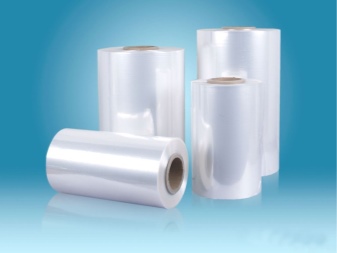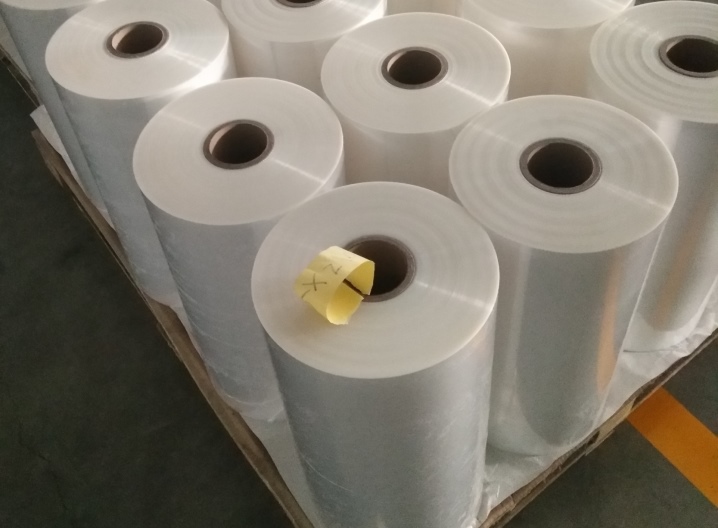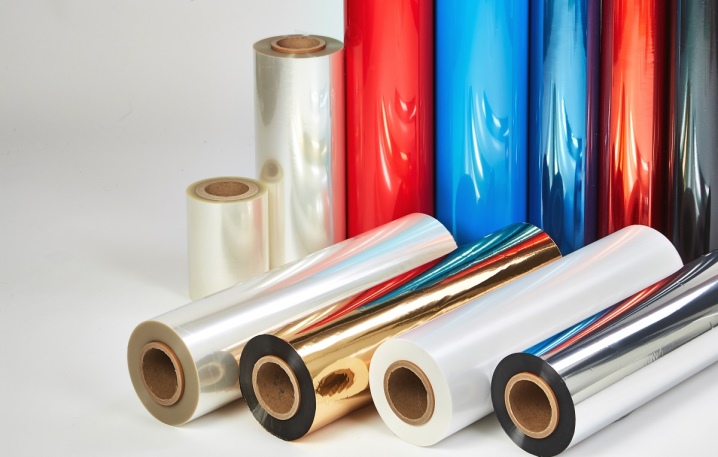Overview and application of PET film

Lavsan packaging film is made by mechanical method from fluoroplastic. Such material has become ubiquitous: in the chemical, food industries, medicine and pharmacology, instrument and mechanical engineering. The official name for this type of polymer canvas is PET film.

What it is?
Among a wide selection of polymer packaging materials, PET (polyethylene terephthalate) film is in great demand. In terms of its physical and operational characteristics, it resembles plexiglass and polycarbonate, but with higher performance parameters. Features of the material may vary depending on the use of certain additives. The unique characteristics of mylar film are combined with an affordable cost and the ability to recycle used products. All this leads to a consistently high demand for such films in a wide variety of industries.


Polyethylene terephthalate is produced in the form of flakes or small granules 3-4 mm in size.
They can act as semi-finished products for subsequent technical processing or be used as fully finished products., in the latter case, they will have to undergo molding (electrical insulating products, textile fibers), extrusion (thin film) or high pressure injection (packaging for products in liquid form).

Due to the introduction of complex additives, it is possible to achieve the required degree of opacity of the finished product and the required color., adjust the parameters of rigidity and elasticity. It is possible to change the properties of the finished product by successively replacing the stages of cooling and heating between the initially amorphous state and the crystalline state that emerged during heating to 80 degrees or more.

Characteristics and properties
Polyethylene terephthalate films are produced in strict accordance with GOST 24234-80.
The main characteristics of mylar films include:
- increased shock resistance at temperatures from -75 to + 150;
- destruction of the material begins when heated from +300 degrees;
- inertness to all major categories of chemicals;
- reduced moisture and gas permeability;
- the possibility of painting without the need for metallization;
- elasticity combined with high tensile strength;
- ease of color printing on the PET surface;
- low heat consumption when forming products;
- the possibility of using different types of recycling and processing.



PET film is ten times more durable and stronger than its polyethylene counterpart. It has the weakest hygroscopicity and the highest dimensional stability.
However, thermal welding of this material presents certain difficulties due to crystallization and shrinkage, which increase the brittleness of the material.
Among the disadvantages of the film, one can distinguish reduced resistance to prolonged action of alkaline solutions, therefore it is rarely used for packaging liquid soap, shampoos and some other types of products containing alkalis.

Species overview
A wide variety of film products are produced on the basis of polyethylene terephthalate, which may differ in their structural structure and, accordingly, in operational characteristics.


Packaging
Packaging represents the core segment in which film coatings were originally introduced.Today, PET film is used for casings for cosmetics, household chemicals, and feed. Depending on the structure of the material, the following types of packaging film are distinguished:
- BOPET - characterized by high puncture resistance, optimal for creating flexible plastic packaging, therefore it is actively used for packaging viscous and liquid products;

- PET-G - used in the manufacture of shrink labels;

- A-PET - due to its exceptional resistance to impacts and thermal influences, combined with hardness, it has found wide application in the manufacture of packaging containers for frozen products.

In recent years, a multi-layer packaging container has become widespread, consisting of a three-layer film, a cardboard base, a metallized coating and an outer paper coating.
Outside, this structure is also covered with PET film.

When producing this packaging material, several technological methods are usually used:
- coextrusion - lamination;
- lamination - extrusion, etc.
In this type of packaging, the polymer becomes an important element, since it is he who protects the product from leakage and deterioration. Lavsan film protects the package from pathogenic microflora getting on the finished product, from the action of ultraviolet radiation, heat and moisture. It is widely used for packaging baby food juices and fermented milk products.


Several types of packaging are created from PET film:
- bilateral - consists of two layers, interconnected with a lock, each part has protrusions and recesses, repeating the shape of the contents of the container;
- folded blister - involves the placement of a base made of cardboard or plastic;
- tuba - practical and original packaging, quite versatile;
- felling - visually resembles a box, optimal for storing cosmetics, stationery, toys and souvenirs;
- corrections - are used for packing piece products;
- PET showcases - simple and easy-to-use demonstration devices, optimal for decorating points of sale of goods.



Polygraphic
The material has a rigid structure, therefore it is most often used for outdoor lamination. This category includes PET film in sheets; it is used to cover all kinds of printing products to protect them from adverse mechanical damage.

Insulating
A separate modification of mylar films used to create effective electrical protection for electronic devices and machines without reducing their functional characteristics. Some versions have found application in the creation of cable sheaths.


Metallized
These films are related to the construction field.
They represent a thin polymer base of small thickness, on the surface of which an alloy of microparticles of nickel, silver, chromium or gold is applied.
The film is often used on metal-plastic windows. In addition, the products are widely used as a heat-saving coating.


Applications
The main areas of application of mylar film:
- production of fibers of various types (lavsan and others);
- production of films of various types (laminate, vacuum, shrink, polarizing, printing, stretch, holographic);
- production of packaging both in the structure of multilayer products based on a combination of paper and several layers of plastic, and separately.
A relatively new direction of using lavsan film can be called the auto industry, where it is used to cover elements of compressors, electrical boards, auto body elements, as well as connectors, pumps and other parts.


Increased strength and uniformity of thickness over the entire surface, as well as low shrinkage at elevated temperatures, in combination with flammability, determine the demand for products as a base for film tapes, photographic films and tape recordings.
PET film is used in motors, transformers and other electrical devices to act as heat-resistant insulation in the winding. Such a cable retains its integrity and functionality under the influence of weather conditions, sea water and high soil acidity.
Lavsan film is in demand in the manufacture of containers, artificial fabrics, as well as car tires. Many composite materials used in mechanical engineering are based on PET films.


Lavsan fibers are widely used in various sectors of the foreign and Russian economy. They serve as the basis for the production of polyester materials for a wide variety of purposes: reinforced drive hoses and belts, awning cloths, packing tape, car airbags, floor coverings, gimbal fabrics, as well as geofabric and banner coverings. High quality thermopackaging films are used to pack perfumery and pharmaceutical products. In most cases, packaging for household chemicals is also made of polyester film.
More than 80% of all PET packaging is made from granules.

Manufacturers
On the territory of our country, production enterprises engaged in the production of PET films were opened in the 70s of the last century. One is based at a military enterprise in Vladikavkaz, and the second is in Vladimir on the territory of the Vladimir Chemical Plant. Nevertheless, Russia is still dependent on imported raw materials.
If we consider the international market as a whole, then from the point of view of production and consumption, the largest "players" are enterprises in North America.

However, in our country, mainly European and Asian raw materials are used. There is a rather interesting trend here.... Historically, the most powerful lavsan film production facilities are located in Asian countries. This segment is developing most actively in South Korea, Japan and India - it is Indian plants that have been among the world leaders in recent years. The production of PET films in China is growing rapidly, in terms of production volumes, Chinese companies are approaching Indian ones, but so far the products are almost fully sold on the territory of their country.

Against this background, European companies are lagging far behind. Only a few manufacturers work here, 2/3 of the entire European market is covered by Mitsubishi (Germany) and Torey (France). Mylar PET-E Mylar lags behind them slightly from DuPont concern (Great Britain, Luxembourg).

Processing
Thanks to the development of technologies for recycling plastic materials, it became possible to significantly reduce the cost of PET film production. This process includes the bulkhead and crushing of the used lavsan packaging. After that, the crushed material goes through a series of cleaning and washing cycles, dries up and goes through the unloading stage. The resulting flakes go directly to production or are granulated. If the recycled plastic has been cleaned properly, then it can be used without any restrictions.
The only drawback of the resulting film is the deterioration of the characteristics of the plastic: the film becomes more fragile and less transparent.

But with thism even the most substandard recyclable polymer can be used to create packaging.
Summarizing the above, it can be noted that Today, PET-based film products have become an indispensable technical product that is widely used in production workshops for various purposes. Despite the wide selection of analogs made from other polymeric materials, the lavsan film wins in the niche of packaging containers due to a unique combination of performance characteristics.Ease of use and durability are combined with the environmental friendliness of the material - it is this factor that allows it to be widely used for the needs of the food industry.

What is the difference between APET, PET-E, PET-G and BOPET films, see below.













The comment was sent successfully.